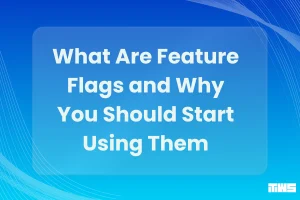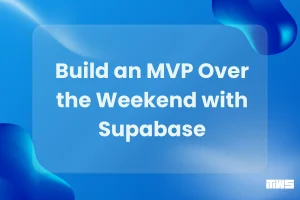As AI, no-code, and low-code technologies move from buzzwords to business drivers, product leaders face a critical question:
Should we build with our internal team or bring in an external vendor?
There’s no one-size-fits-all answer. The right decision depends on product stage, talent availability, time-to-market pressure, compliance, and your growth goals.
In this article, we break down:
- The unique challenges of working with emerging tech
- Pros and cons of in-house vs vendor models
- A decision framework tailored to AI, no-code, and low-code
- Real-world insights from Team Work Spirit’s product partnerships
The Rise of Emerging Tech: Why the Model Matters
AI development, no-code platforms, and low-code solutions have transformed how digital products are built:
- AI/ML: Enables personalization, automation, decision-making at scale
- No-code: Tools like Bubble and Glide democratize app creation
- Low-code: Platforms like OutSystems or Mendix reduce boilerplate and speed up delivery
But with power comes complexity.
These technologies require not just technical expertise — but deep product thinking, governance, and orchestration.
That’s why choosing the right team model is essential.
Option 1: Building In‑House
Pros
- Full Control
You own every decision: from architecture to design patterns to delivery priorities. This is critical for:- Regulated industries (Fintech, HealthTech)
- Products that require deep integration with internal systems
- Long-term product roadmaps
- Knowledge Retention
An internal team develops institutional memory, which helps with:- Feature evolution
- Platform consistency
- Tech debt management
- Cultural Fit & Alignment
In-house teams are immersed in your company culture and product vision. This leads to:- Tighter feedback loops
- Better product intuition
- More proactive ownership
Cons
- Long Hiring Cycles
According to GitHub’s Octoverse report, demand for AI/ML engineers outpaces supply. Same for no-code architects or DevOps professionals with low-code experience.
Time-to-hire can be 3–6 months, especially in competitive markets. - Limited Expertise in Emerging Tech
Unless your core business is AI or automation, your team may lack:- Real-world experience with models (e.g., GPT, LLM fine-tuning)
- Vendor selection for low-code stacks
- Governance for citizen developers
- Higher Fixed Costs
Hiring, onboarding, benefits, and retention programs can stretch budgets — especially before the product proves ROI.
Option 2: Working with a Vendor
Pros
- Speed to Market
Vendors offer ready-to-go teams with proven processes. For example, at Team Work Spirit, we can assemble:- AI product squads with MLOps, backend, and data engineering
- No-code prototyping teams
- Low-code delivery pods with QA + DevOps
- Deep Specialization
The right vendor brings:- Prior experience with similar platforms
- Pre-built components, integrations, security patterns
- Ability to guide architecture choices and avoid traps
- Flexible Scaling
You can:- Start small, scale fast
- Pause/resume based on roadmap
- Adapt composition (e.g., shift from AI to DevOps focus)
- Risk Mitigation
A vendor assumes hiring risk, delivery deadlines, and team management. Plus, you avoid long-term overhead until the product reaches maturity.
Cons
- IP & Security Concerns
Working with external teams raises questions about:- Data sharing
- AI model ownership
- Regulatory compliance (especially in health or finance)
At Team Work Spirit, we address this via:- Strict NDA + DPA frameworks
- Onshore delivery when required
- Model licensing arrangements
- Potential Knowledge Loss
Unless properly transitioned, vendors may leave gaps in:- Code context
- Business logic
- DevOps configuration
- Less Cultural Immersion
Vendors may not fully understand internal politics, priorities, or unspoken constraints — unless embedded into your team.
Use Cases by Technology
AI/ML
| Factor | In-House | Vendor |
|---|---|---|
| Model ownership | Better control | Requires IP clauses |
| Time-to-market | Long (hiring, setup) | Fast |
| Data compliance | easier to govern | Needs vetting |
| Talent access | Scarce | On-demand access |
Recommendation: Hybrid model — start with vendor to prototype, then internalize.
Low-Code Platforms
| Factor | In-House | Vendor |
|---|---|---|
| Platform experience | Often new to team | Pre-trained experts |
| Flexibility | Total control | May be platform-limited |
| Governance setup | Needs custom tooling | Best practices ready |
| Total cost | Training costs | Lower delivery cost/unit |
Recommendation: Vendor-led for initial delivery, with internal enablement phase.
No-Code MVPs
| Factor | In-House | Vendor |
|---|---|---|
| Speed | Longer (learning curve) | Days/weeks |
| Risk | More experimentation | Risk of overbuilding |
| Quality | Risk of sprawl | Structured approach |
| Cost | Budget-friendly | Vendor can be lean too |
Recommendation: Vendor for MVP → Evaluate traction → In-house scale-up
Real-World Scenario: AI Assistant for Patient Triage
A HealthTech startup needed to build an AI-based triage assistant for a telemedicine platform. Challenges:
- Medical compliance (HIPAA)
- Complex data classification
- Fast timeline for investor demo
They chose Team Work Spirit to deliver the first version:
- Backend in Python (FastAPI)
- Integration with OpenAI GPT-4 API
- Admin dashboard via low-code tooling
- MLOps pipeline for future model fine-tuning
Outcome:
- Working prototype in 5 weeks
- Internal team now onboarding for next phase
- IP and architecture fully transitioned
Explore similar case studies here
How to Choose: Decision Framework
Ask yourself:
- What’s the timeline to first value?
Need something in 4–8 weeks? Go vendor. Have 6+ months? In-house can work. - Do we have access to domain experts?
If not, vendors bring much-needed perspective. - How critical is IP retention?
If you’re building proprietary models, have your legal team shape vendor terms or go hybrid. - Can the product scope change drastically?
Vendors offer flexibility to scale up/down as the roadmap evolves.
The Hybrid Approach: Best of Both Worlds
Most mature companies don’t choose just one — they mix both.
- Vendor delivers MVP → In-house team owns V2+
- In-house owns roadmap → Vendor supports execution sprints
- Embedded vendor teams → Treated as internal pods with shared rituals
This model reduces risk, accelerates learning, and enables long-term success.
At Team Work Spirit, we often start as a delivery vendor — and evolve into a tech partner that co-owns product growth.
Final Thoughts
Emerging tech moves fast. Your team strategy must move faster.
The choice between vendor and in-house isn’t binary. It’s contextual. What matters most is:
- Aligning with your product phase
- Balancing speed, cost, control, and compliance
- Having the right partners to help you adapt
Whether you’re building an AI tool, a no-code MVP, or a low-code enterprise platform — we’re here to help.
Ready to Launch?
- Explore more insights: https://www.twsgo.com/blog/
- See our product cases: https://www.twsgo.com/portfolio
- Talk to our team: https://www.twsgo.com/



